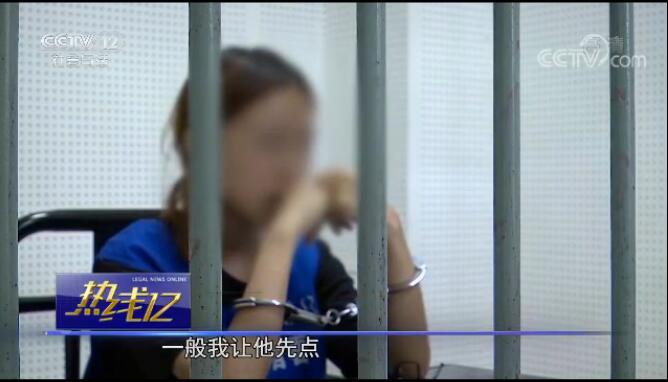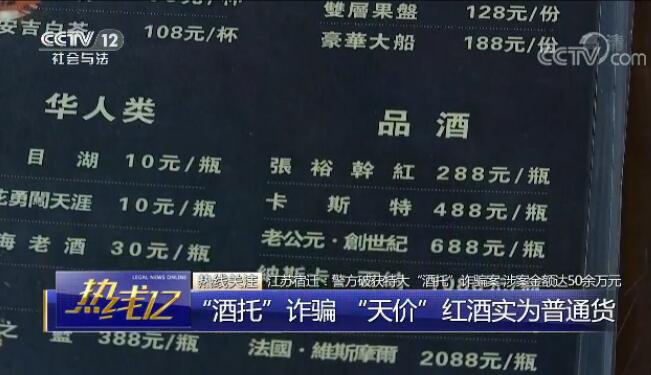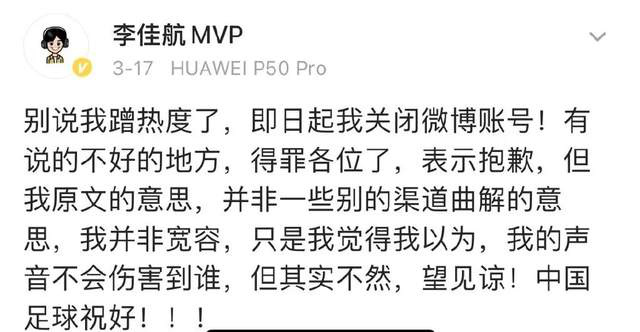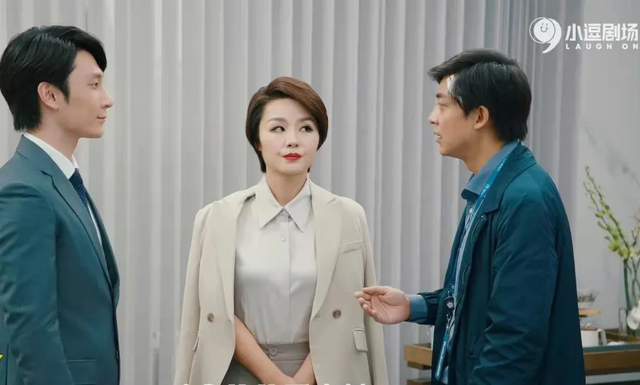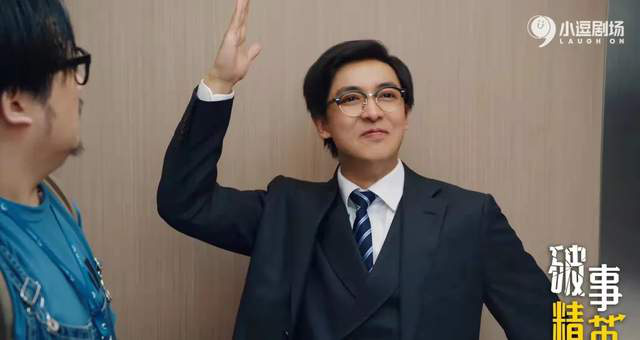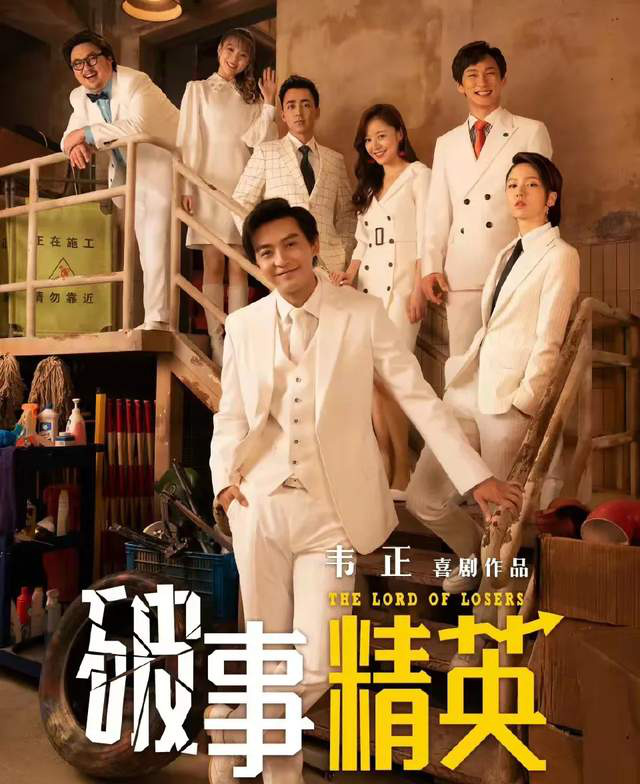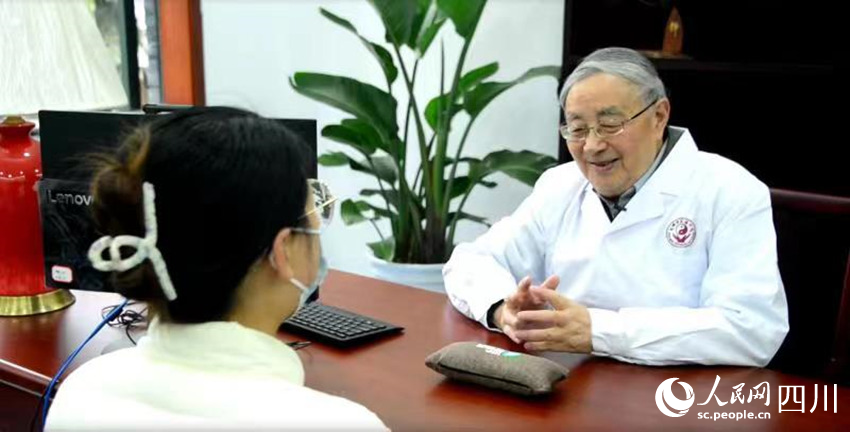
Zhang Tingmo treats patients. People’s Daily Online Wang Fan photo
Zhang Tingmo, a professor and doctoral supervisor at Chengdu University of Traditional Chinese Medicine, is an expert in traditional Chinese medicine. Although he is over eighty years old, he is still active in the clinical and teaching of traditional Chinese medicine. In the past 60 years, from studying medicine, practicing medicine to spreading medicine, Zhang Tingmo has always practiced the heartfelt words of "serving patients wholeheartedly and guiding students with heart and affection".
In 2022, Zhang Tingmo was selected as one of the top ten Chinese medicine practitioners in Sichuan Province. As a doctor, he saves lives and lights up the hope of life; As a teacher, he teaches and educates people, igniting the hope of life.
Facing the achievements, he said: "My actual age is 80 years old. I hope I can continue to serve patients wholeheartedly in my lifetime, and share my experiences and thoughts over the years in words so that future generations can take fewer detours."
Healer, heal the wounded and rescue the dying.
Zhang Tingmo has rich clinical experience in medical diseases and dermatoses for 60 years. He identified difficult and severe cases accurately, and had remarkable curative effect. He cured many hospitalized patients with "critical" deprivation dermatitis and unexplained high fever, and its curative effect surprised the competent western medicine experts.
Zhang Tingmo is a minor in medicine, paying equal attention to both ancient and modern, with a solid foundation and a wide range of knowledge, and has accumulated unique experience in drug use. At one time, an employee of Chengdu University of Traditional Chinese Medicine was "critically ill" because of persistent high fever, and he passed various examinations in the western medicine hospital for more than 10 days, so he could not confirm the diagnosis. Zhang Tingmo was invited to see a doctor, and thought that the patient was suffering from damp-heat inhibiting shaoyang and qi deficiency at the same time. He took three doses of Haoqin Qingdan Decoction. The patient took the medicine at about 7 o’clock that night, and started to have a fever at 11 o’clock. He was kept in hospital for 3 days and was discharged with normal body temperature.
Zhang Tingmo has excellent medical skills and noble medical ethics. This is directly related to his family’s ancestral medical practice and inheritance of medical ethics.
Zhang Tingmo was born in a family of traditional Chinese medicine, and is the fourth generation descendant of family medical skills. When he was very young, he followed his father and watched him save lives. His father, Zhang Jiliang, is not only superb in medical skills, but also noble in medical ethics. His father’s consulting room is always open to patients. Seeing that some patients have no money to treat diseases, they even buy medicines for patients out of their own pockets. Zhang Tingmo was deeply impressed, not only inherited his father’s tradition of free clinic, but also extended his footprint further, stepped deeper and stretched longer.
In 1963, 20-year-old Zhang Tingmo was assigned to Luding Dermatology Prevention Hospital in Sichuan Province to engage in clinical work of traditional Chinese medicine. Whenever he is free, he carries a visiting box and goes to the countryside to treat the villagers.
In the past 17 years, regardless of the dawn in the middle of the night, severe cold and heat, wind, frost, rain and snow, whenever patients need it, Zhang Tingmo will carry a medicine box on his shoulder and run along the winding country road in Luding to deliver medicines to the villagers and take their pulse. Go from village to village to relieve patients’ pain in time, and make Zhang Tingmo a well-known health "guardian" in the local area.
After leaving Luding Dermatology Prevention and Treatment Hospital in Sichuan Province, he has been adhering to the medical ethics of saving lives. Once, a retired worker in Chengdu Hongpailou Garment Factory had a stroke, and there were only two empty nesters at home, so it was inconvenient to go out to see a doctor. Zhang Tingmo learned of this situation, and in order to help him recover as soon as possible, he took the initiative to use his rest time to visit the doctor for free. For a year, Zhang Tingmo went to the patient’s home for free consultation every week, rain or shine, until the patient recovered.
During the six years since he was invited to Xinjin County Hospital of Traditional Chinese Medicine, Zhang Tingmo trained grassroots Chinese medicine personnel through outpatient service, rounds and lectures. Although Zhang Tingmo is an old doctor of traditional Chinese medicine, his outpatient registration fee is always 50 yuan per person, and there has been no price increase. When he left, Xinjin County Hospital of Traditional Chinese Medicine counted the prescriptions he had prescribed, and the average price was around 30 yuan. He said that it is necessary for doctors to have benevolence and benevolence to let patients spend as little money as possible and achieve as great a curative effect as possible.
Teacher, preach and teach.
Zhang Tingmo is not only a doctor with benevolence, but also a teacher of teaching and educating people. As a famous teacher in the first national college of traditional Chinese medicine, his rich clinical practice and vast academic thoughts are important intellectual resources for the development of traditional Chinese medicine.
In 1978, Zhang Tingmo was admitted to the first postgraduate of Chinese medicine in Chengdu College of Traditional Chinese Medicine with excellent results. During his graduate studies, he also studied the exegetics taught by professors of Sichuan Normal University, which benefited a lot from his later career.
In those years, in order to learn Chinese medicine well, he was also willing to invest in learning materials. In 1977, with a monthly basic salary of 24 yuan, he could spend 17.5 yuan to buy a set of Chinese Medicine Dictionary; In 1979, with a monthly salary of 42 yuan, he could spend 32 yuan to buy a set of Ci Yuan. He said that to learn Chinese medicine, we must study ancient books and documents. Chinese medicine documents are concise and concise, and we can understand the premise before we can understand the true meaning. Therefore, he also bought all kinds of ancient Chinese medicine classics in China and studied them one by one. At present, there are hundreds of original Chinese medicine classics, Chinese medicine dictionary, Chinese materia medica, etymology, Ci Hai, Shuo Wen Jie Zi, Kangxi Dictionary, Er Ya and other dictionaries in his home, all of which were purchased by himself in the last century, and many of them have been read very badly.
When he graduated, Zhang Tingmo was allowed to stay as a teacher because of his excellent grades and rich clinical experience. He said: "At that time, Chinese medicine was the golden signboard of our school, and it was also a brand discipline. It was very demanding to teach in this discipline." Zhang Tingmo’s conscious innate lack of eloquence has had a certain impact on his expression. In order not to smash the "golden signboard" of the brand school, after graduating from graduate school, he devoted himself to the study of traditional Chinese medicine.
He initiated the teaching method with drug efficacy as the core, and promoted the knowledge of performance, downward application and syndrome taboo, which effectively solved the problems of traditional Chinese medicine involving a wide range, difficult to talk about and difficult to learn, and achieved the effect of getting twice the result with half the effort, keeping simplicity and controlling complexity. He has taught "Chinese Pharmacy" and various special lectures for doctoral students, college students and Chinese medicine personnel for more than 10,000 hours, and was rated as "favorite teacher" by students.
In 2003, Zhang Tingmo was also selected by state administration of traditional chinese medicine as the speaker of the national model teaching teacher training class, and gave a full-time demonstration lecture on Chinese Pharmacy for teachers from more than 20 colleges and universities for 80 hours, equivalent to 120 hours. The recorded CD-ROM was widely circulated, and was regarded as a teaching classic of Chinese Pharmacy by teachers and students in the industry, which made an important contribution to the improvement of the teaching level of Chinese medicine teachers in Chinese medicine colleges and universities across the country.
Inheriting the quintessence of China, cultivating peaches and planting plums. He said that doctors are a "late-maturing" profession, which requires comprehensive knowledge, medicine and gradual accumulation of clinical experience. In English, doctor and doctor are the same word, which also shows that doctors need higher academic literacy. "Medical students should cherish the opportunity to study medicine, work hard and endure loneliness, step by step. As long as they work hard and gradually accumulate, the achievements of inheriting and innovating Chinese medicine must be above our generation."
Sixty years in the Spring and Autumn Period, Zhang Tingmo’s original heart remained unchanged. A white coat, a responsibility, and a passion, he used his doctor’s kindness to relieve the pain of one patient and guide countless people to contribute great love to the medical cause. (Wang Fan, intern Wu Shuting)
